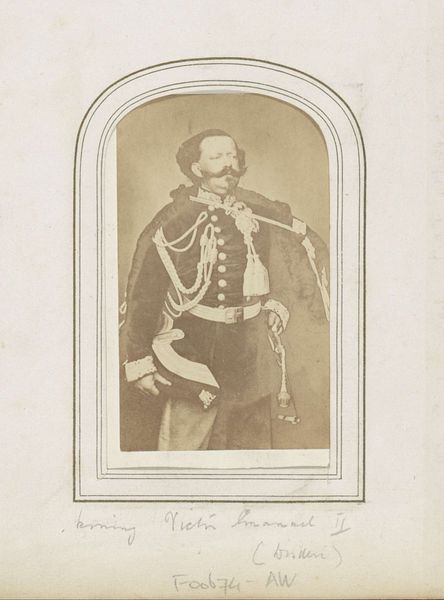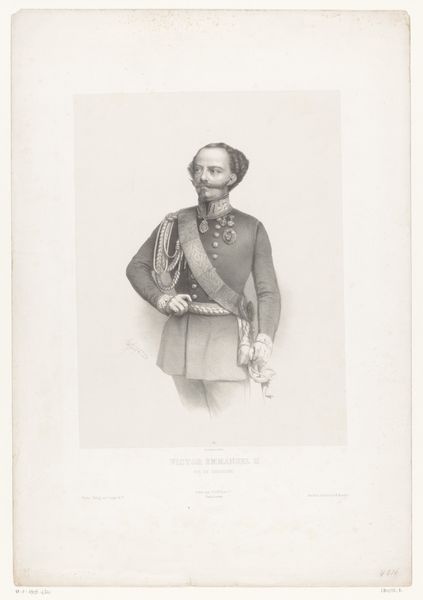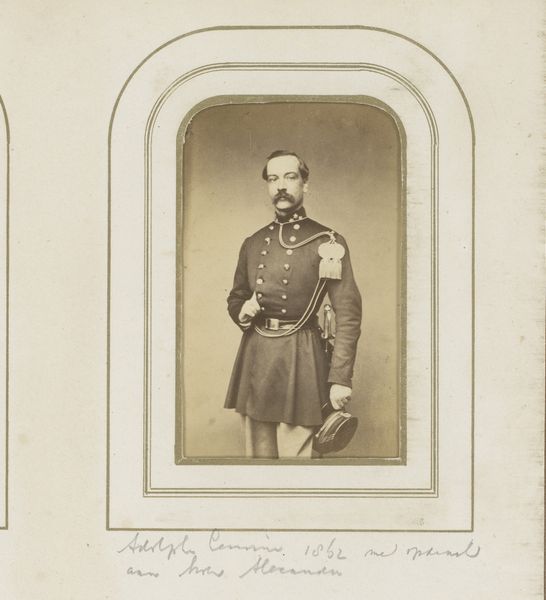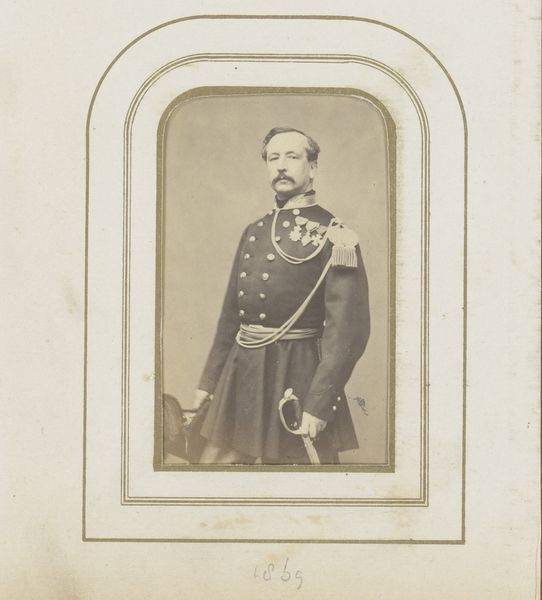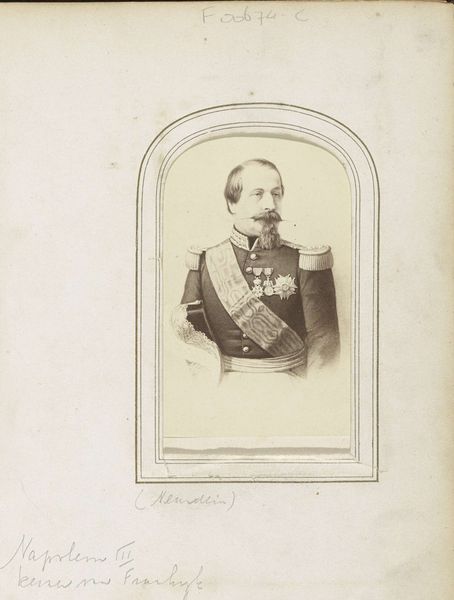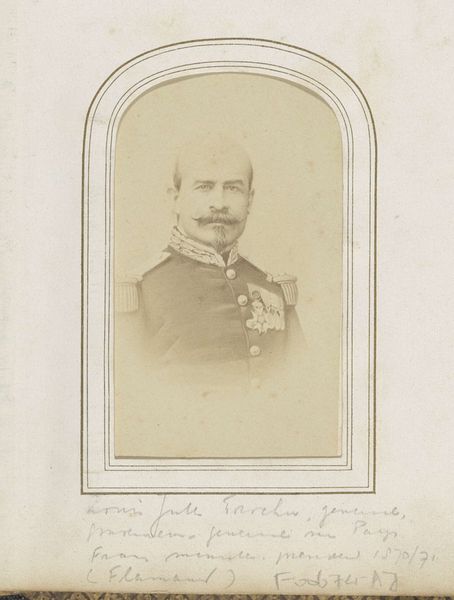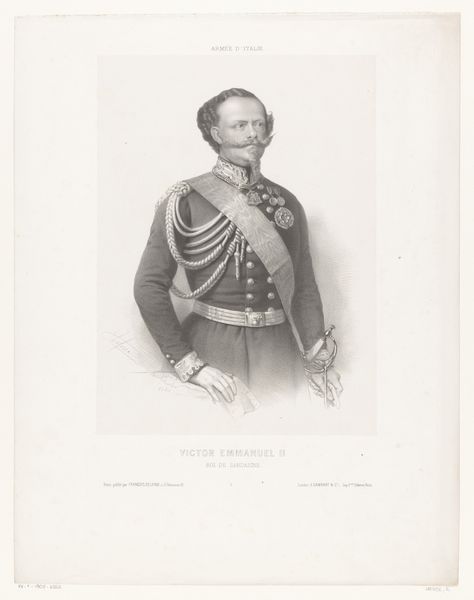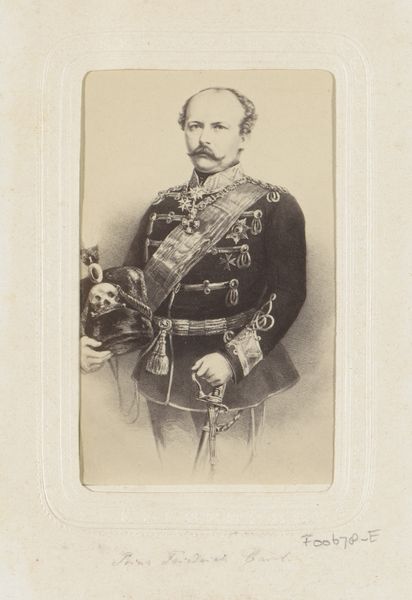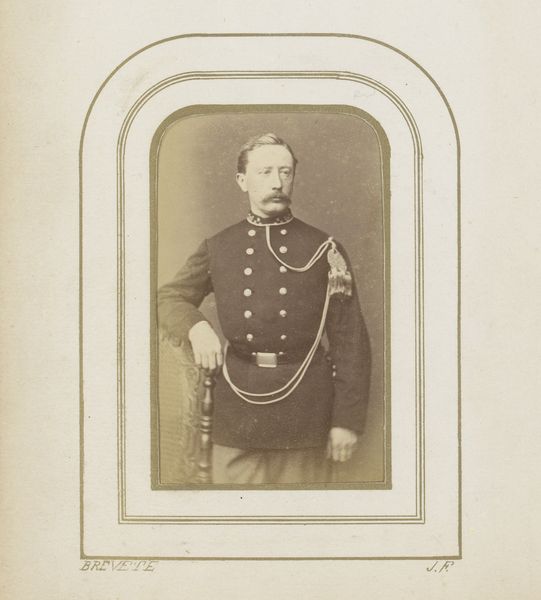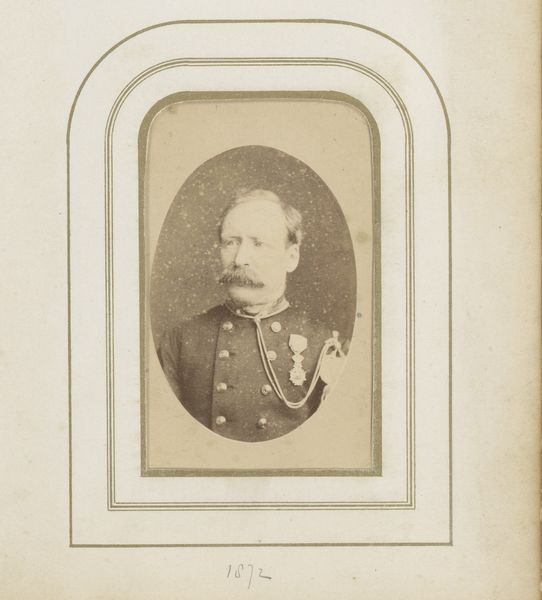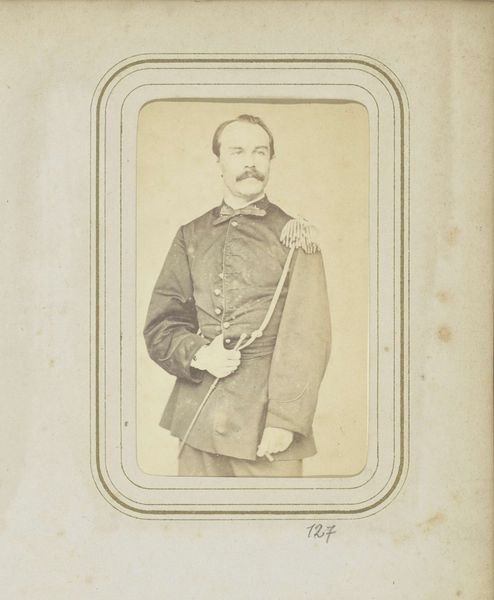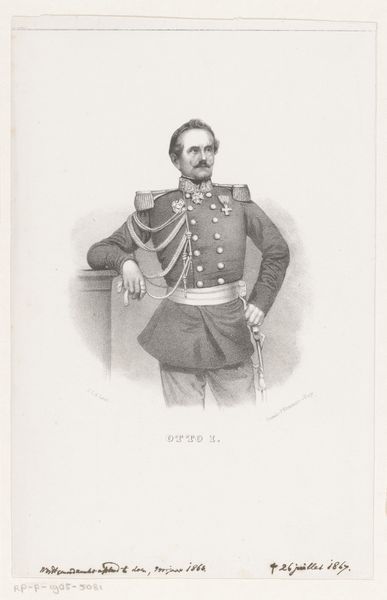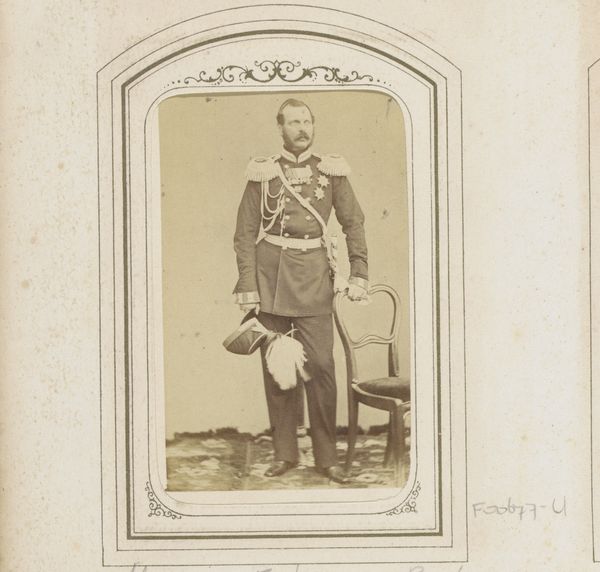
Fotoreproductie van (vermoedelijk) een prent van Victor Emanuel II, koning van Italië 1862 - 1880
0:00
0:00
photography, albumen-print
#
portrait
#
photography
#
albumen-print
Dimensions: height 80 mm, width 54 mm, height 91 mm, width 56 mm
Copyright: Rijks Museum: Open Domain
Editor: Here we have what’s believed to be a photo reproduction of a print depicting Victor Emanuel II, King of Italy, dating from around 1862 to 1880. It's an albumen print, and you can really see the texture of the paper. What strikes me most is the emphasis on his uniform, and the various medals. What can you tell me about this piece? Curator: Well, let's consider the materiality of this image. It's an albumen print – a process heavily reliant on the global trade networks of the time. Think about the eggs required for the albumen, likely sourced from vast, industrial farms. This isn't just about the king's portrait; it's about the infrastructure of image production. Editor: So, it's not just about representing power, but the *means* of representing it? Curator: Exactly. Consider the mass production potential of photography at this time. Portraits, once reserved for the elite who could afford painted ones, became available to a wider public. This print, therefore, speaks to the democratization of representation. But who benefitted materially from that? Not necessarily the sitter. Editor: Right, someone had to produce the photographic paper and process the print. That creates jobs, wealth… Curator: Precisely! What does the carefully chosen pose, uniform, sword and medals mean in terms of how we consume images of power? Who profits? And what power dynamics are masked by its supposed objectivity? Editor: That shifts my perspective quite a bit. I was initially focused on the regal figure, but now I see the photograph as a product, embedded in a specific material and economic context. Curator: And remember, even seemingly objective records, like photographs, were, and continue to be, meticulously constructed and marketed, reflecting and perpetuating specific power structures and ways of life that benefited from those social norms. It's not the "what," but the "how" and the "why" that truly reveals meaning here.
Comments
No comments
Be the first to comment and join the conversation on the ultimate creative platform.
